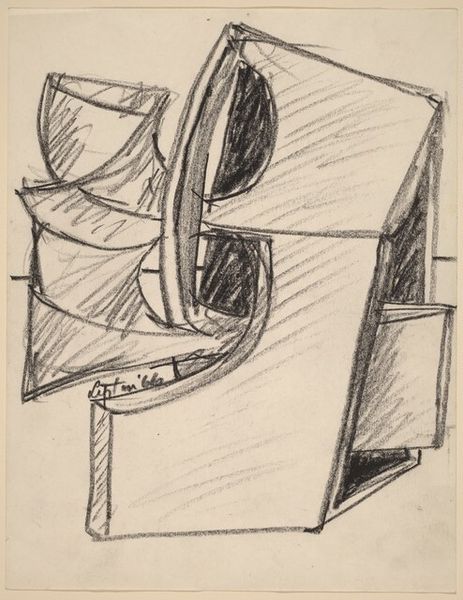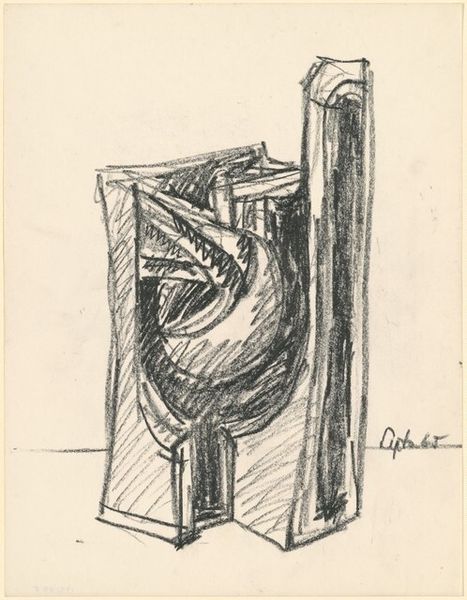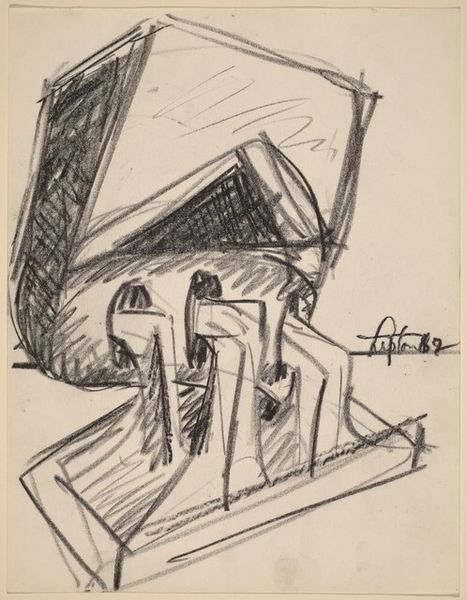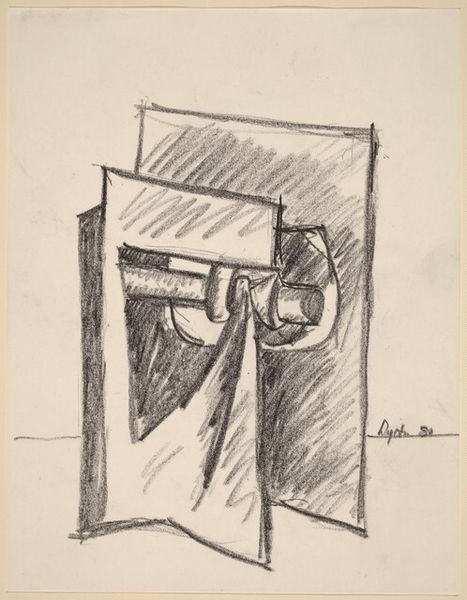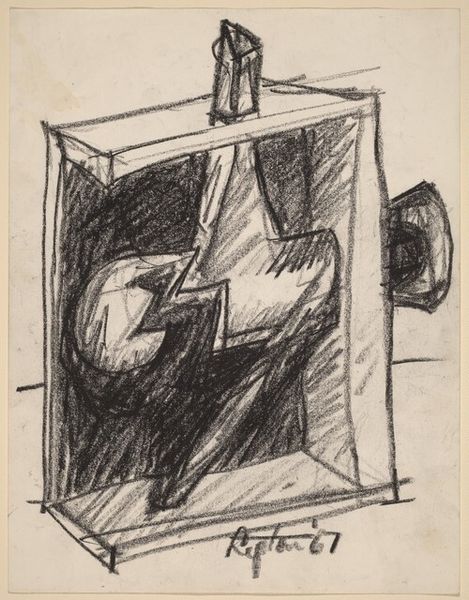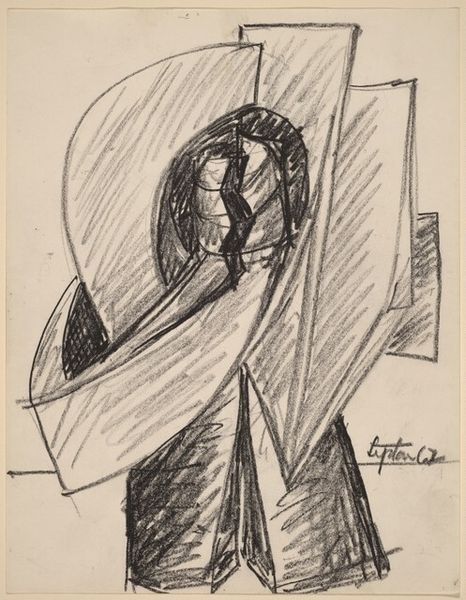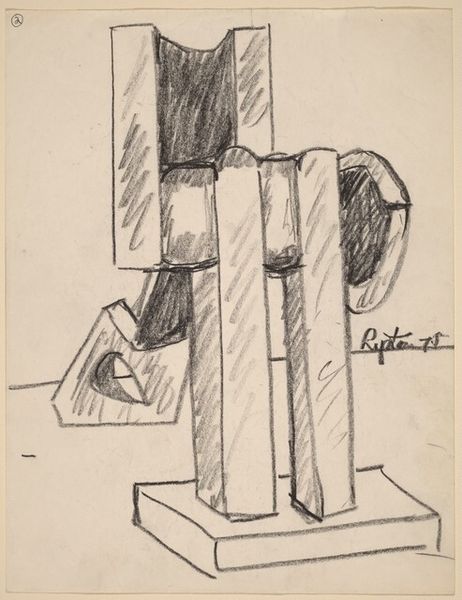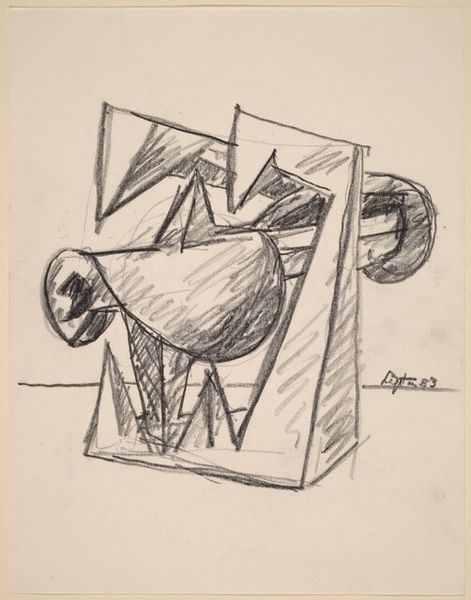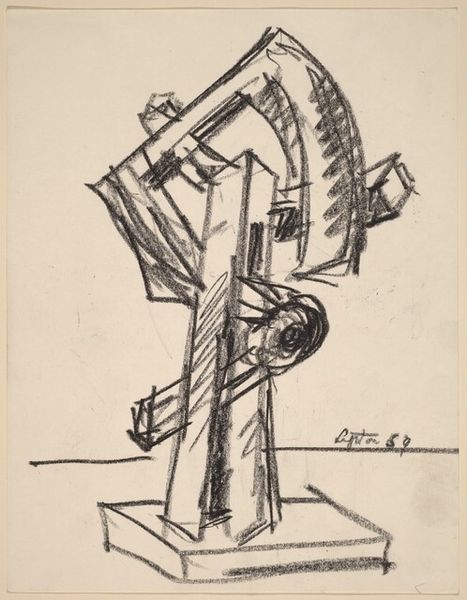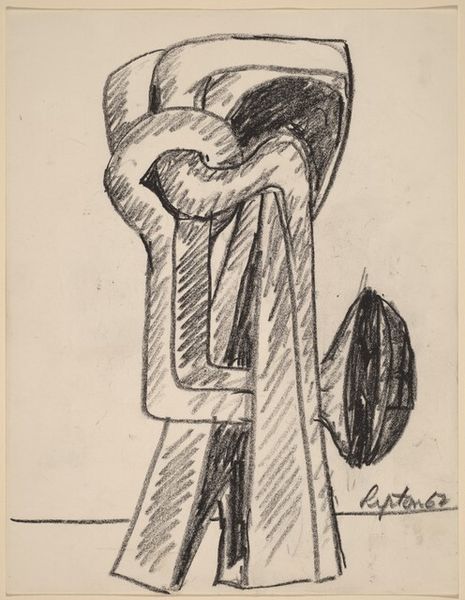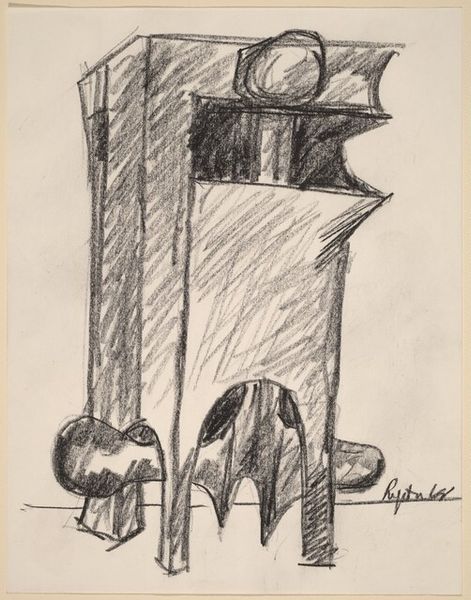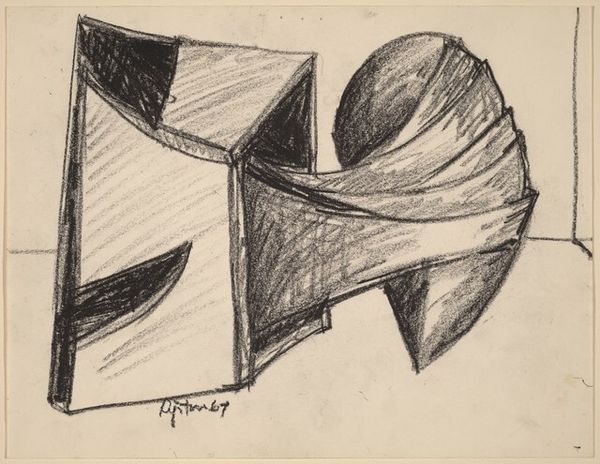
Dimensions: sheet: 27.94 × 21.43 cm (11 × 8 7/16 in.)
Copyright: National Gallery of Art: CC0 1.0
Curator: We're looking at a graphite drawing titled "Study for 'Unquiet Room'," created in 1950 by Seymour Lipton. The medium itself suggests immediacy, doesn’t it? Editor: It does. And it evokes a moodiness right away. The dark graphite feels almost claustrophobic, reflecting the 'unquiet' feeling implied by the title. The strokes feel searching. Curator: Lipton's forms are geometric, yes, but not cold. See how he uses line weight and hatching to create areas of shadow and volume? The geometric shapes imply architectural features; doorway, a partial wall, perhaps. Note the spiral form; is that a symbolic element, a detail extracted to communicate instability? Editor: I see what you mean, definitely. It looks like he's wrestling with structure. And graphite is such an accessible, common material. The visible process hints that this study might not be just a preliminary sketch but also an exploration of the materials at hand. His labor is on full display. Curator: Right, so the visible reworking adds a layer. It's less about perfection, more about capturing an inner state through form. The geometric components have the potential to unlock a sense of architectural history, like the foundations of some Brutalist complex. I can’t help but ponder how those severe geometries have served a broader societal purpose. Editor: The "Unquiet Room"—it could be a commentary on industrial life, no? The materials, though modest, speak of urban spaces, production, maybe alienation even. The hatching reminds me of factory drafts; not precise but expressive. I’m intrigued by the tension. Curator: A dialogue between the external world, rendered in geometry, and the internal emotional landscape expressed by Lipton's restless, probing lines. What are your lasting thoughts? Editor: I am really struck by how Lipton’s choice of material enhances the emotional resonance of form, imbuing an initial idea with deeper implications of our relationship to a lived experience. Curator: For me, the drawing serves as a potent reminder of the symbolic weight simple forms can carry and how abstraction can deepen our understanding of human experiences by distilling core elements.
Comments
No comments
Be the first to comment and join the conversation on the ultimate creative platform.
